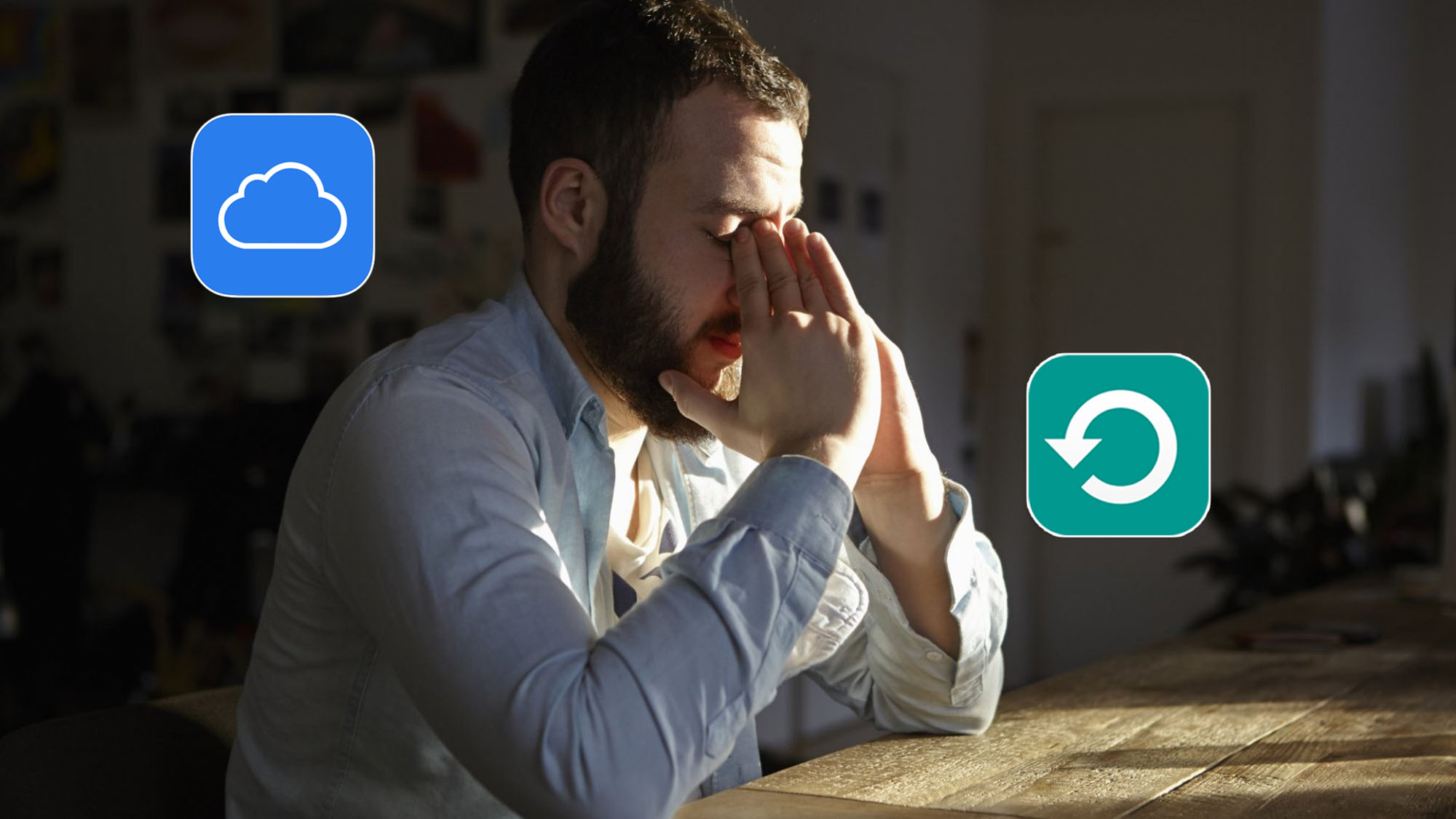For a long time I regularly made backups of all Apple devices to iCloud. To do this, I paid for a subscription to the Apple cloud. Then I decided to store photos and videos in a different way, but I kept the backup of my iPhone and iPad stable.
After a while, I noticed that this is the only reason to pay for space in iCloud, but a copy in the cloud does not provide any significant advantages. Over the past 5 years, iCloud backup has never been useful to me, and paying for a subscription now, although possible, is not very convenient.
I weighed all the pros and cons, and suddenly realized that there was no particular reason to store an iPhone backup in the Apple cloud. You can turn it off and you won’t lose anything. Now I’ll tell you why.
Briefly:
What data is stored in iPhone cloud backup?
Not all iPhone data ends up in iCloud backup.
What is stored in an iPhone backup. Reducing its weight in iCloud
This is what is contained in the cloud backup by default:
iPhone settings.
List of installed applications (the programs themselves are downloaded from the App Store after the backup is deployed).
Appearance of the desktop (location of icons, widgets, wallpaper).
Backups of Apple Watch paired with iPhone.
Ringtones and voicemail recordings.
Saving other data to iCloud is configured separately; they can also be saved to iCloud.
How to store backup photos and videos from iPhone

There are several ways to backup your iPhone gallery. I don’t like using iCloud storage for this, here’s why:
in the iPhone library there is no folder structureeverything is stored in a single feed; to find old photos you need to scroll through it endlessly or use the search;
needed pull your entire collection photos and videos from one iPhone to another, uploading the originals to the cloud, otherwise there will not be enough space even on the largest drive;
if you urgently need original photos or videos from iCloud, you won’t be able to get them quickly;
Apple has glitches and sometimes long-deleted pictures pop up in the gallery;
the Photos application in iOS 18 has been seriously damaged, the situation can be corrected, but not completely;
if you want to change your iPhone to Android, you will have to download all the data from the Apple cloud for several days, here are the instructions.
I decided a long time ago that I would store photos and videos in a different way. Now this is a third-party cloud + local backup on my home NAS, once every couple of weeks or after some event I spend about 5-10 minutes to manually upload everything I need, and the local backup itself synchronizes with the cloud.
How do I store family photos from iPhone without iCloud. The method is not ideal, but reliable
As a result, I get a convenient folder structure in which in a minute I can find old photos from vacations and trips, someone’s anniversary, an exhibition or other event. At the same time, I don’t depend on Apple, all originals are stored at arm’s length, and if necessary, I can configure the upload of the media library to any other cloud in a couple of clicks. And most importantly, the loss of an iPhone for me does not equal the loss of some precious pictures or videos.
You can choose any third-party cloud and simply disable saving your media library to iCloud.
How to store apps removed from the App Store

When creating a backup in iCloud, the iPhone will save only the list of installed programs and games, and when restoring the data, it will re-download them from the App Store. Of course, programs that have been deleted from the store will not be transferred via iCloud backup. The same applies to applications that are not installed from the App Store.
7 ways to install apps on an iPhone without the App Store in 2024
How then to store copies of deleted applications? No way! You just need to know the current method of restoring them.
Previously, I tried to create local backups of banking programs using these instructions, but then I gave up on this idea. In this direction, everything changes often and quickly; it’s easier to google a working method for the moment when you need it.
For example, here are instructions for bank clients.
On topic:
How to install the Sber or SBOL application right now
How to install the T‑Bank application on iPhone, iPad and even Mac
How to install the Alfa-Bank application on iPhone
How to install the VTB application on iPhone
If something changes, we always release current instructions and update old collections.
How to store other important data

In addition to photos and applications, other important data remains. All of them are saved in iCloud regardless of whether iPhone backup is enabled or not.
You can back up the following data:
Files from iCloud Drive
iCloud Mail
Text iMessage
Logins and passwords from the keychain
Notes
Health app data
Calendars
Contacts
Reminders
Links and open Safari tabs
Data from other applications
The same applies to third-party installed programs or games.
The only inconvenient moment is eSIM transfer. Even when transferring a backup via iCloud, cards from Russian operators will not be transferred with 100% probability. But you can order and transfer from most operators directly through the application. You will either receive a QR code that you can scan on your new device, or you can immediately download a profile to install the eSIM.
What to do if your iPhone is stolen or lost

It is important to prepare in advance and take several preliminary steps. We talked about this in more detail in a separate article.
What to do if your iPhone is stolen or lost. The most detailed instructions
The most important of the list of actions:
Protect your Apple ID and add ways to recover it: trusted contact or account recovery key.
Install duplicate banking and operator applications on another device (husband’s/wife’s iPhone or home iPad).
Additionally, password-protect all important applications.
This way you can protect all your important data, quickly block cards and recover a SIM card from a missing iPhone.
What is the result: disable backup in iCloud or leave

So it turns out that it is more convenient to store photos in third-party clouds or locally, applications removed from the store will have to be transferred manually, and all other important data is saved in iCloud regardless of the iPhone or iPad backup.
When switching to a new device without backup, you will need to spend half an hour on the initial setup, and all other data will be downloaded from the cloud. Now I change my iPhone about once every 3 years and I don’t see a problem spending time setting up a new device. As a bonus, I won’t drag the accumulated garbage or system cache from the old backup.
If you are too lazy to do this, you can always:
save all data in iCloud (even over the limit) for 21 days when changing iPhone;
transfer data from the old iPhone to the new one via cable.
Given such opportunities, backing up your iPhone to iCloud is necessary for those who consistently lose their smartphone every few months, and regularly upgrade to a new model in the fall. Only in this case does it make sense to pay for an iCloud+ subscription and regularly upload data from your smartphone there. In all other cases, cloud backup is not particularly useful.
PS You can disable backup in iCloud along the way Settings – Apple Account – iCloud – iCloud Backup.
What do you think? Do you back up your iPhone to iCloud?
Source: www.iphones.ru


